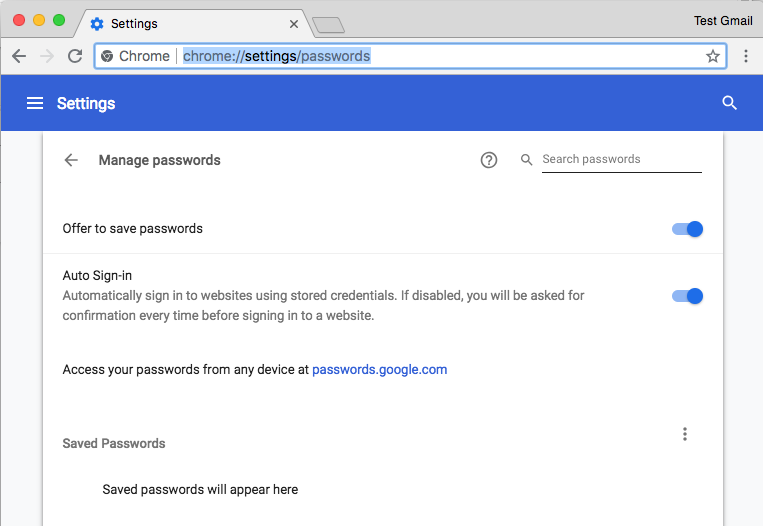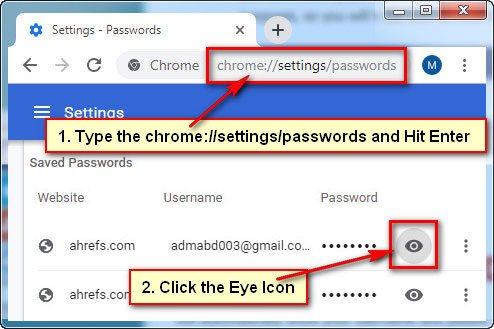
- #Google chrome settings passwords do not display how to#
- #Google chrome settings passwords do not display password#
#Google chrome settings passwords do not display password#
You may get an alert from Chrome if you use a password and username combination that has been compromised in a data leak on a third-party website or app. Warn you if passwords are exposed in a data breach.Learn more about what data helps Chrome to get better at blocking bad downloads and detecting malware. Chrome will also send this data any time that you visit a suspicious site. Help improve security on the web for everyoneĬhrome will periodically send some system information and page content to Google so that we know about any threats that you encounter.Learn more about Safe Browsing protection. Turn off Payment methods and addresses using Google Pay. Click You and Google Sync and Google services.

If the website matches anything on the list, your browser sends a partial copy of the address to Google to find out if you're visiting a risky site. To stop syncing payment info to Google Pay: On your computer, open Chrome. When you visit a website, Chrome checks it against a list of websites stored on your computer that are known to be bad. Get an alert whenever Chrome sees that the website that you're going to could be harmful.
#Google chrome settings passwords do not display how to#
Learn more about how to fill in forms automatically. If you've saved payment methods to Chrome, you can let Chrome offer your saved info to make filling in forms easier. Allow sites to check if you have payment methods saved.However, many websites will still collect and use your browsing data to improve security, provide content, services, ads and recommendations on their websites, and generate reporting statistics. You can include a Do Not Track request with your browsing traffic. Send a Do Not Track request with your browsing traffic.

To do this, Chrome may use cookies, if you allow cookies, and may encrypt and send pages through Google to hide your identity from sites. To manage Safe Browsing and protection, click Security.Ĭhrome makes browsing and searching faster by preloading pages it thinks you might visit.To control how Chrome handles cookies and tracking, click Cookies and other site data.To delete information from your browsing activity, like your history, cookies or saved passwords, click Clear browsing data.To control how Chrome handles content and permissions for a site, click Site settings.Select Import passwords > Select file and find your. Look for Saved Passwords and select the three dots to the right of its Add button. Click Privacy and security and choose your settings. Go to Autofill (in the left menu) > Password Manager.


 0 kommentar(er)
0 kommentar(er)
